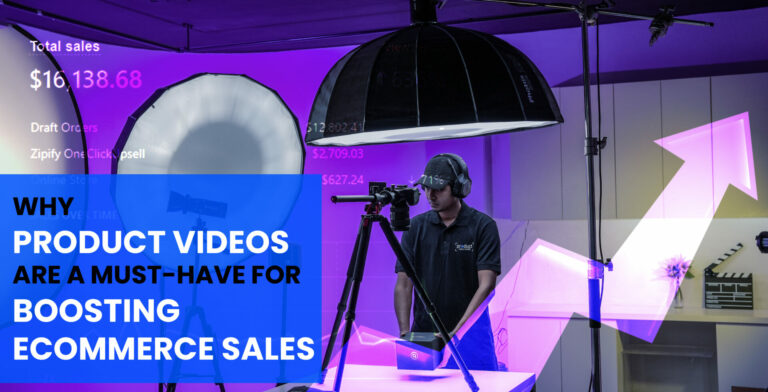Stuck between choosing a model or going faceless for your product promotion?
In the dynamic landscape of product promotion, visual content plays a pivotal role in capturing consumer attention and driving sales. Among the numerous strategies available, leveraging models and faceless videos stand out as two prominent approaches.
However, the question arises: which approach – models or faceless videos – is more effective in showcasing products and resonating with the target audience?
The answer depends on your specific goals, target audience, and product type.
In most cases, using real models tends to connect better with audiences and boost engagement. For example, an athletic apparel company would likely benefit more from using fit models to showcase how their products look and function during activity.
However, faceless videos can also be very effective for certain niches focused purely on product functionality. A tech company explaining product specifications may find an animated demo just as effective.
To navigate this decision-making process further, it’s crucial to delve deeper into the nuances and implications of each method.
In the following sections, we will analyze the pros and cons of using models versus faceless videos for product promotions so you can determine the best approach for your brand. Let’s get started.
Understanding Models in Product Promotion
Models have long been utilized in marketing campaigns to personify products, evoke emotions, and establish connections with consumers. The use of models allows for a human touch, adding relatability and aspirational value to the products being promoted.
Advantages of Models in Product Promotion:
Emotional Connection: Emotions can be conveyed, through lifestyles, and narratives that resonate with the audience. If you associate the product with a relatable personality, consumers can envision themselves using the product, which would drive more engagement and sales.
- Brand Representation: Models can embody a brand’s ethos, values, and identity, serving as brand ambassadors. Their persona can enhance brand recognition, trust, and credibility among consumers.
- Visual Appeal: You can also showcase the product from various angles, demonstrating its features and benefits effectively with the help of models. Their presence adds visual appeal, making the promotional content more captivating.

Limitations of Models in Product Promotion
- Cost and Logistics: Hiring models involves expenses related to fees, wardrobe, makeup, and location, making it a costly endeavor for some businesses, especially smaller ones with constrained budgets.
- Limited Diversity Representation: Choosing models might inadvertently limit diversity representation, which could alienate segments of the audience seeking more inclusive representation in advertising.
Exploring Faceless Videos in Product Promotion
Contrary to the prominence of models, faceless videos—where the focus remains solely on the product without any human presence—have emerged as an alternative approach. These videos prioritize the product itself, emphasizing its features, functionality, and benefits.
Advantages of Faceless Videos in Product Promotion
- Focus on Product Features: Faceless videos put the product front and center, allowing for a detailed showcase of its functionalities, design, and usability without any distractions.
- Cost-Effectiveness: Producing faceless videos can be more budget-friendly compared to hiring models. It requires fewer resources, making it an attractive option for businesses with limited financial means.
- Universal Appeal: By eliminating human presence, faceless videos can appeal to a wider audience irrespective of demographics or cultural backgrounds. This inclusivity resonates well in global markets.

Limitations of Faceless Videos in Product Promotion:
- Lack of Human Connection: Faceless videos might struggle to evoke emotions or establish a personal connection with the audience, potentially reducing engagement levels.
- Potential Perception of Sterility: Some consumers might perceive faceless videos as clinical or detached, lacking the warmth and relatability that human presence provides.
Making the Decision: Factors to Consider
When deciding between models and faceless videos for product promotion, several factors warrant consideration:
- Target Audience: Understanding your audience’s preferences, demographics, and psychographics is pivotal. Some audiences might resonate more with relatable models, while others might prefer the straightforwardness of faceless videos.
- Product Type and Complexity: The nature of the product—its complexity, design intricacies, and functionality—dictates the effectiveness of showcasing it through models or faceless videos. Some products might benefit from a visual demonstration, while others might need a human touch for context.
- Brand Identity: Aligning the chosen approach with the brand’s identity and messaging is crucial. Brands aiming for a more personable image might lean towards models, while those emphasizing product functionality might opt for faceless videos.
- Budget and Resources: Consideration of financial resources and logistical capabilities is essential. Smaller budgets might incline businesses towards faceless videos, while larger budgets could accommodate the use of models.
Finding the Balance: Hybrid Approach
In many cases, the most effective strategy might involve a hybrid approach—blending models and faceless videos strategically based on the specific promotional context. This amalgamation allows for leveraging the strengths of both methods.
For instance, a promotional video might start with a faceless demonstration of the product’s features and functionalities, followed by a segment where a model demonstrates the product in use, showcasing its relatability and aspirational value.
Such a hybrid approach combines the clarity of product-focused content with the emotional connection offered by models.

Conclusion
The decision between using models or faceless videos for product promotion isn’t a one-size-fits-all scenario.
Both methods possess distinct advantages and limitations, and the optimal choice depends on a multitude of factors, including the target audience, product type, brand identity, and budget constraints.
Businesses must conduct thorough market research, understand their audience preferences, and align their promotional strategies with their brand identity.
Moreover, a flexible approach that combines elements of both models and faceless videos can often yield the most effective and engaging promotional content.
Ultimately, the key lies in crafting content that resonates authentically with the audience while effectively showcasing the product’s value proposition.





